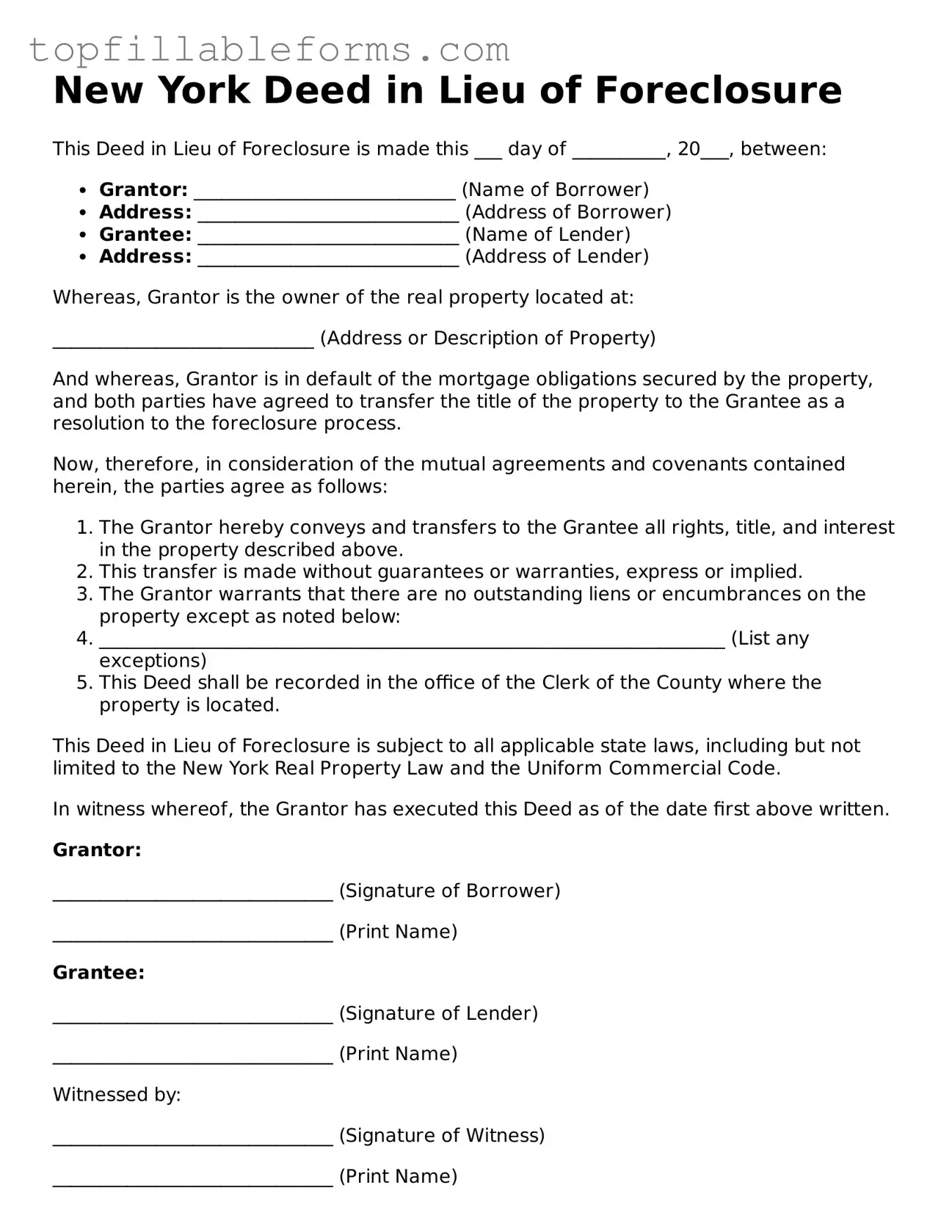New York Deed in Lieu of Foreclosure
This Deed in Lieu of Foreclosure is made this ___ day of __________, 20___, between:
- Grantor: ____________________________ (Name of Borrower)
- Address: ____________________________ (Address of Borrower)
- Grantee: ____________________________ (Name of Lender)
- Address: ____________________________ (Address of Lender)
Whereas, Grantor is the owner of the real property located at:
____________________________ (Address or Description of Property)
And whereas, Grantor is in default of the mortgage obligations secured by the property, and both parties have agreed to transfer the title of the property to the Grantee as a resolution to the foreclosure process.
Now, therefore, in consideration of the mutual agreements and covenants contained herein, the parties agree as follows:
- The Grantor hereby conveys and transfers to the Grantee all rights, title, and interest in the property described above.
- This transfer is made without guarantees or warranties, express or implied.
- The Grantor warrants that there are no outstanding liens or encumbrances on the property except as noted below:
- ___________________________________________________________________ (List any exceptions)
- This Deed shall be recorded in the office of the Clerk of the County where the property is located.
This Deed in Lieu of Foreclosure is subject to all applicable state laws, including but not limited to the New York Real Property Law and the Uniform Commercial Code.
In witness whereof, the Grantor has executed this Deed as of the date first above written.
Grantor:
______________________________ (Signature of Borrower)
______________________________ (Print Name)
Grantee:
______________________________ (Signature of Lender)
______________________________ (Print Name)
Witnessed by:
______________________________ (Signature of Witness)
______________________________ (Print Name)
Date: __________________________
